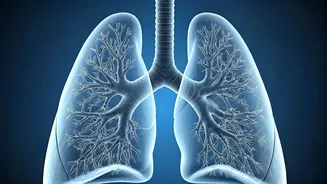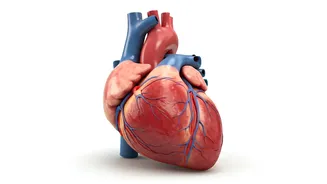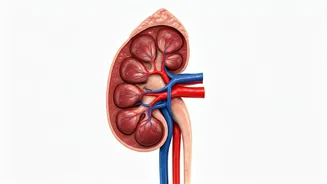Defining Human Endurance
Human endurance, at its core, represents the ability to sustain physical or mental activity over an extended duration. This capacity is critical in a diverse
array of scenarios, from athletic endeavors to everyday tasks. Physiologically, it is a complex interplay of various systems, including the cardiovascular, respiratory, and musculoskeletal systems. These systems work in tandem to supply muscles with the necessary fuel – primarily glucose and fats – and efficiently remove metabolic byproducts such as carbon dioxide and lactic acid. The efficiency and effectiveness of these systems largely determine one's endurance capacity. Factors like maximal oxygen uptake (VO2 max), the percentage of this oxygen uptake sustained over time, and the body's lactate threshold (the point at which lactic acid accumulates faster than it can be cleared) are significant physiological determinants of endurance. Furthermore, other considerations, such as the efficiency of the musculoskeletal system, how the body conserves energy, and mental fortitude also play vital roles. In essence, human endurance is a multifaceted attribute, reflecting not just physical prowess but also an intricate web of physiological and psychological adaptations.
Oxygen's Crucial Role
Oxygen plays a pivotal role in human endurance, serving as the essential element for cellular respiration, the process through which our bodies convert the energy stored in food into a usable form (ATP). This energy fuels muscular contractions and all other physiological functions. The availability and efficient use of oxygen, therefore, are major limiting factors in endurance performance. When we engage in strenuous activity, our bodies require significantly more oxygen. This increased demand leads to a cascade of physiological responses, including increased heart rate, breathing rate, and blood flow to the working muscles. The lungs work to bring in more oxygen, the heart pumps more blood to deliver oxygen to muscles, and the muscles’ mitochondria (the 'powerhouses' of cells) use this oxygen to generate ATP. The maximum rate at which the body can utilize oxygen during intense exercise, known as VO2 max, is a key metric for endurance athletes. Training, particularly aerobic exercise, can significantly improve VO2 max, along with the efficiency of oxygen utilization. The more efficient the body is at transporting and utilizing oxygen, the longer it can sustain high-intensity activity.
Environmental Influences
Environmental conditions profoundly influence human endurance. These external factors can either enhance or severely limit our physical capabilities. One critical factor is temperature. In hot environments, the body works overtime to dissipate heat through sweating. This can lead to dehydration, which impairs cardiovascular function and reduces endurance. Athletes competing in hot conditions must carefully manage fluid intake and electrolyte balance to mitigate these effects. Conversely, cold environments present a different set of challenges. The body must work to conserve heat, which can redirect energy away from muscular activity. Shivering, a process of rapid muscle contractions to generate heat, also increases energy expenditure and can reduce endurance over time. Altitude also has a dramatic impact. At higher altitudes, the air is thinner, meaning there's less oxygen available. This reduces the oxygen available to the muscles, directly impacting performance. Athletes often train at altitude to acclimatize their bodies to the oxygen-scarce environment, stimulating the production of red blood cells (which transport oxygen). Furthermore, humidity, wind, and even the type of terrain can significantly affect endurance performance, making environmental awareness a crucial element of any endurance-focused strategy.
Training and Adaptation
Training is a major driver of physiological adaptations that enhance endurance. Consistent and structured training programs, particularly those focused on aerobic exercise (like running, cycling, and swimming), trigger a range of adaptations across multiple bodily systems. Cardiovascular adaptations include an increase in heart size and stroke volume (the amount of blood the heart pumps with each beat), resulting in a lower resting heart rate and increased cardiac output during exercise. Respiratory adaptations involve improved lung capacity and efficiency of gas exchange. Muscular adaptations encompass increased mitochondrial density (more 'powerhouses' in the muscle cells), which leads to more efficient energy production and storage of glycogen (the body's primary fuel source). In addition, regular endurance training increases the body's ability to utilize fats as fuel, which spares glycogen stores and delays fatigue. These adaptations don't just happen overnight; it's a gradual process, but the outcome is improved endurance. Recovery is also critical; it involves allowing the body to repair itself, build muscle, and replenish energy stores. A well-rounded training program should incorporate both training and adequate recovery for optimal adaptation and performance.
Psychological Endurance
While the physiological aspects of endurance are fundamental, psychological factors also play a critical role in human performance. Mental toughness, focus, and motivation can dramatically influence how long and how hard an individual can perform. During prolonged physical activity, the brain receives signals related to fatigue, pain, and discomfort. These signals can influence the perception of effort, which in turn affects the willingness to continue. Mental strategies, such as setting realistic goals, breaking down the challenge into smaller, more manageable parts, and using positive self-talk, can help athletes overcome mental barriers. Furthermore, the ability to tolerate pain and discomfort is a key component of psychological endurance. Athletes learn to push through physical challenges by developing a mental resilience and strategies to manage pain. Motivation also plays a role. Internal motivators (e.g., enjoyment of the activity) and external motivators (e.g., competitive goals) can influence an athlete's commitment and perseverance. In essence, psychological endurance complements physical capabilities, enabling individuals to push their limits and achieve peak performance in demanding circumstances.











